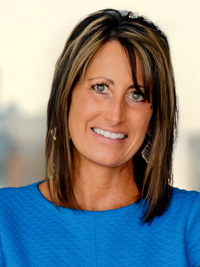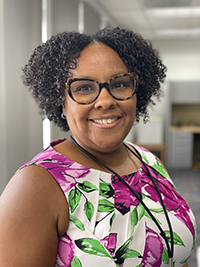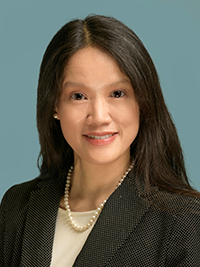How change management and empowered employees can drive digital transformation
Most healthcare systems have a list of technology updates and transformations they intend to accomplish to help move their system forward. But implementing new technologies, including electronic health record (EHR) systems, are never just technical projects. Usually, implementing a new technology system affects numerous departments and involves cooperation from a range of different professionals.
In an HFMA Executive Roundtable held in June 2024, several industry leaders discussed how their organizations work to empower and encourage their employees to help deliver successful digital transformation. For most of the participating organizations, prioritizing technology initiatives requires an evaluation of their people, their processes and their technology.
“You have to understand where you are to successfully set up your organization for change,” said Kim Waters, principal of advisory services at CereCore. “When cross-functional teams work together, such as revenue cycle teams and clinical teams partnering to help choose the right technology integrations and to implement them effectively, that produces better patient outcomes, as well as greater efficiency and improved financial performance.”
Roundtable participants shared their experiences in implementing new technology, including the crucial role that change management and collaboration play in adopting and using new technologies and driving cultural change.
What does digital transformation mean to your organization? And what changes will it require to be successful?
Christine Aucreman: Prior to January 2020, we operated on numerous disparate electronic health record systems, and as a national health system, it was very difficult for us to get an enterprisewide view of performance and to link best practice standards across all of our markets. Since then, we’ve migrated nearly the entire organization to a single instance of Epic. To prepare for this large-scale migration, we transformed our revenue cycle operations by shifting from a decentralized to a centralized model, enabling standardized workflows prior to each Epic go-live wave. This gave us an opportunity to improve our processes before layering on new technology.
We recognize that a transformation, digital or otherwise, is an ongoing and iterative process. As such, we put a lot of energy and attention on continued workflow optimization, our business partner strategy and optimizing our Epic platform. We’re now better positioned to drive efficiencies and improve our revenue cycle performance as a result.
Dawn Castro: Change management is required at all levels, not just with revenue cycle employees. We’ve been going through integrating an [EHR] on our ambulatory surgery center side. We talked about it with all of our hospital leadership and created some physician champions for the hospitals that were converting. We did three conversions last year, and we’ve got a lot more.
I think the change management is critical, not only internally, but also from our strategic vendor partners. Whether it be the third-party vendor that we’re using for billing or coding, they’re going to be impacted by that change. We have to make sure they’re involved in training, and we also establish a governance structure for the cross-functional leaders that are needed, including procurement, managed care team, CDM team and others. [Change management] was a very new concept because the teams had very much been working in their own silos in the past. It was really important for us to handle change management and pre-selling in advance, and not leaving it just on an Epic or MEDITECH to go implement something. They’re giving you an IT platform, but we’ve got to own it.
Katy Courson: At Mass General Brigham, we are on a centralized platform for our health information system. When we think about digital transformation, level one is optimizing that system. But level two is how do we invest and onboard capabilities, both from a technical and a skill perspective, to be ready for the digital environment that we’re all facing. When it comes to empowering people, part of it is mindset. In training, when we think about building skills and capabilities, adjusting mindset is at the forefront of the work that we need to do.
Pam Manes: You can’t rely on technology to solve your problems. We’re getting these very high-dollar systems, but they’re not going to solve our operational efficiencies. I think we have to. I’m looking at our current state and what we are doing, and trying to standardize across all of our areas, reducing waste and improving efficiencies so that when we do add Epic, we will be ready. We’re not looking for Epic to solve all the problems; we’re ready to apply that additional technology to even make us more efficient.
Kim Waters: It’s about aligning your technology, your people and your process, because technology’s not going to do it on its own. The mindset piece is huge, and that’s where you’re going to get some really exciting innovation, because the people with hands-on keyboards are the ones who see those problems. If you can, get them to think outside the box and imagine what could be, not just, “What do I have to do?” It’s exciting when you see those light bulbs turn on and then the conversation just starts, and you almost can’t stop it.
How would you assess your organization’s readiness for change?
Katie Adams: At Augusta, we started by training our leadership team on innovation and creativity, while also permeating this energy and enthusiasm throughout the organization, while staying focused on our organizational goals and objectives.
In revenue cycle, we provide financial and operational support for the rest of the organization. Many times, clinical areas will make a change that impacts revenue cycle or at a minimum requires us to support that change. It feels like there are always things being thrown our way and sometimes we’re caught off guard. We have started to understand that we have to have organizational pillars to guide those innovations. Maybe a potential change will make your workflow a lot easier, but is it falling in line with one of these pillars?
Prioritizing our goals for innovation is extremely important to focus our resources in the right area. We’ve also adopted a “fail fast and fail forward” mentality so that we learn quickly from our mistakes and course-correct as needed.
Above all else, mindset is a key component. We have asked staff to give us all their wildly creative ideas, and we’ve made a commitment to them to vet each one fully. As a result of revenue cycle leaders encouraging team member involvement, we’ve been able to index more than 150 ideas that would streamline workflows, improve team collaboration and raise the collective knowledge of the team. As a practical example, we now have a cash posting technician who has learned how to write Excel macros to make her balancing at the end of the day more efficient. Letting the frontline team members tell us what’s broken and what would improve their process can be powerful for making the right changes.
Liana Leung: When I worked in a New York City public hospital system, they moved to Epic. As one of the physician leaders, I had to try to convince all the physicians to use and implement Epic. It helped to have them at the table to help decide what information they wanted to be abstracted and transferred in, and what information they wanted to input themselves. As physicians, we were very concerned that inaccurate information might be transferred in there, so including them in those decisions was very helpful.
Sometimes we physicians like to do things our own way, and some of the leaders are there for 20 or 30 years and you feel like, if this has been working for a long time, why do we need to change? But having a physician who is helping other physicians to adapt to the new system can be very helpful. Because I was an Epic superuser, they trained me to provide support for the physicians. I was able to show them that this could improve their efficiency, productivity and quality.
Waters: At the end of the day, the physicians really care about their patients. When we converted another facility from Cerner to Epic, we had a great conversation with the physicians, and they saw the advantage of how the software could help them take back care of the patient.
Manes: We have to be advocates for the revenue cycle, because everything clinical teams do has an impact on us. If we allow things to be setup that will negatively impact the revenue cycle, then we’re going to be chasing those errors. Chasing things to try to fix them on the back end is much more expensive, time-consuming and less likely to actually make it through to payment. We just have to make sure that as we’re having these conversions, that we are advocates for what we need to have a successful revenue cycle because ultimately that will also help us take care of our patients.
For example, if there is a field that was supposed to be a hard stop at the physician level for pre-certification and we decide to make it a soft stop, we will allow errors to occur, which could lead to write-offs, causing us to need more resources on the back end. So, as we’re doing these transformations, we have to make sure that we educate clinicians about why we need something, which will strengthen the entire revenue cycle.
Sam King: Change is hard. It’s important to give people a tangible, small-win milestone so they can see progress. It might be something you can achieve in three or four months to get people inspired and excited. They know that when you tally up these small wins, the big win is not that far. We set objectives from small, medium to large. It really gets people to see, okay, we can actually do that. And you celebrate every time you hit a milestone and then go for the next big project.
How does your organization approach the people side of change, in order to support technology adoption, shape culture, realize competitive advantage and engage and retain clinicians?
Aucreman: It’s my perspective that people can handle change. What they can’t handle is uncertainty. So shortening that period of uncertainty for your colleagues is critical if you want to successfully lead any type of transformation. It begins with clearly communicating the objective of the new tech, the role it is intended to play and where you intend to implement it. Also, when it comes to driving digital transformation, successful leaders don’t view it as an event. They view it as an ongoing cyclical, iterative process. They approach it almost as a matter of routine, and it’s just a part of their culture.
With that said, leading a digital transformation requires advanced leadership acumen and too often our leaders may emerge through the ranks based on strong technical skills but are lacking the skills necessary to drive transformational change. For this reason, I think it is critical that we double down on investing in our current and future leaders, so they’re better prepared to lead in an environment riddled with such complexity.
Shkysi Cummings: Some teams throughout the hospital have recently formed some really good partnerships, for example, between the clinical informatics and the learning and development teams. Previously, learning and development teams did all the teaching, and the informatics would work in specific pockets. Now they’ve created a great partnership, along with the nurse educators, in trying to understand what is needed to help people learn and change. That has been working really well.
Courson: At Mass General Brigham, we’ve created an in-house revenue cycle program called Everybody Solves Problems. It’s a training cohort program we put each team through to build performance management capabilities, but also to convey the idea that yes, at every level you are here to help identify and solve problems. We’re in the midst of rolling this out revenue cycle wide, but we’ve had some really good initial response from our teams who historically have been very heads down in their work and are now executing while leveraging these skill sets. We are trying to be an organization where not everything has to be driven from the top in order to improve performance.
Waters: When team members get to see their ideas come to life and the impact that it makes, it just becomes a snowball effect. They want to continue sharing more good ideas and working to implement them.
For healthcare organizations, digital transformation is a means to an end: It’s not just about adopting new technology, it’s about improving efficiency, uncovering cost savings and better serving patients.
To meet those goals, healthcare leaders must understand that digital transformation is much more than an information technology project. Leaders who can accurately assess their employees’ ability and willingness to make important changes and can generate buy-in and collaboration for those changes, can help pave the way to a more digitally advanced and financially secure future for their organizations.
Panelists

KATIE ADAMS
MBA, is administrative director of revenue cycle at Augusta Health in Fishersville, Va.

CHRISTINE AUCREMAN
FHFMA, CPA, is vice president of performance management and support services at Trinity Health in Livonia, Mich.

DAWN CASTRO
is senior vice president, revenue, at Surgery Partners in Brentwood, Tenn.

KATY COURSON
CHFP, MPH, is executive director of revenue cycle performance excellence at Mass General Brigham in Boston.

SHKYSI CUMMINGS
is vice president of operational finance at Bermuda Hospitals Board in Paget Parish, Bermuda.

SAM KING
FHFMA, EHRC, FHIMSS, is faculty at USC Price School of Public Policy, Los Angeles, Calif.

LIANA LEUNG
MD, MPH, FACP, is senior medical director, ambulatory care and population at BronxCare Health System in New York.

PAM MANES
CRCR, MHA, is director of operations for patient access services at CoxHealth in Springfield, Mo.

KIM WATERS
MBA, CHFP, CDH-E, is principal, advisory services at CereCore in Nashville, Tenn.
About CereCore
CereCore® provides IT services that make it easier for hospital operators to focus on transforming healthcare through technology. With a heritage rooted in top-performing hospitals, we provide IT and application support, technical professional and managed services, IT advisory services, and EHR consulting to hospitals and health systems. For more information, please visit CereCore.net.
This published piece is provided solely for informational purposes. HFMA does not endorse the published material or warrant or guarantee its accuracy. The statements and opinions by participants are those of the participants and not those of HFMA. References to commercial manufacturers, vendors, products, or services that may appear do not constitute endorsements by HFMA.






